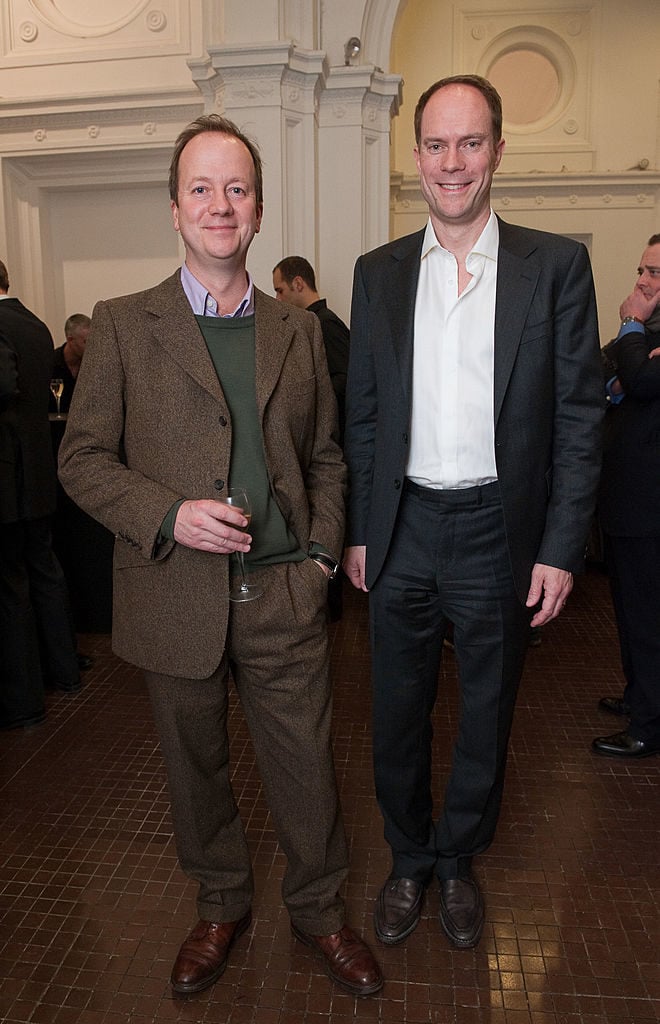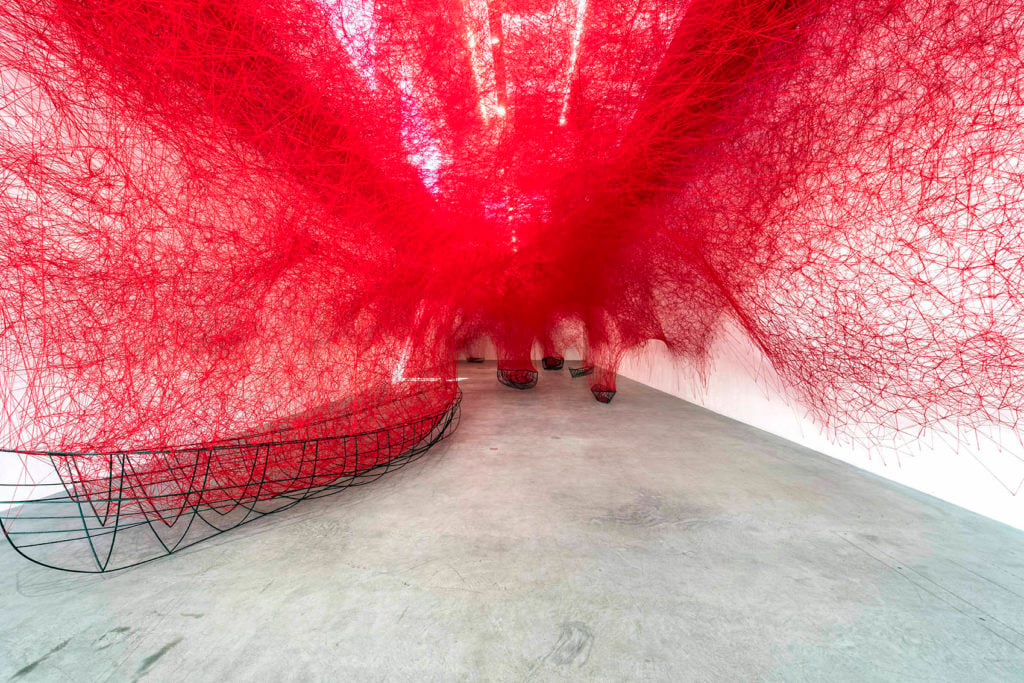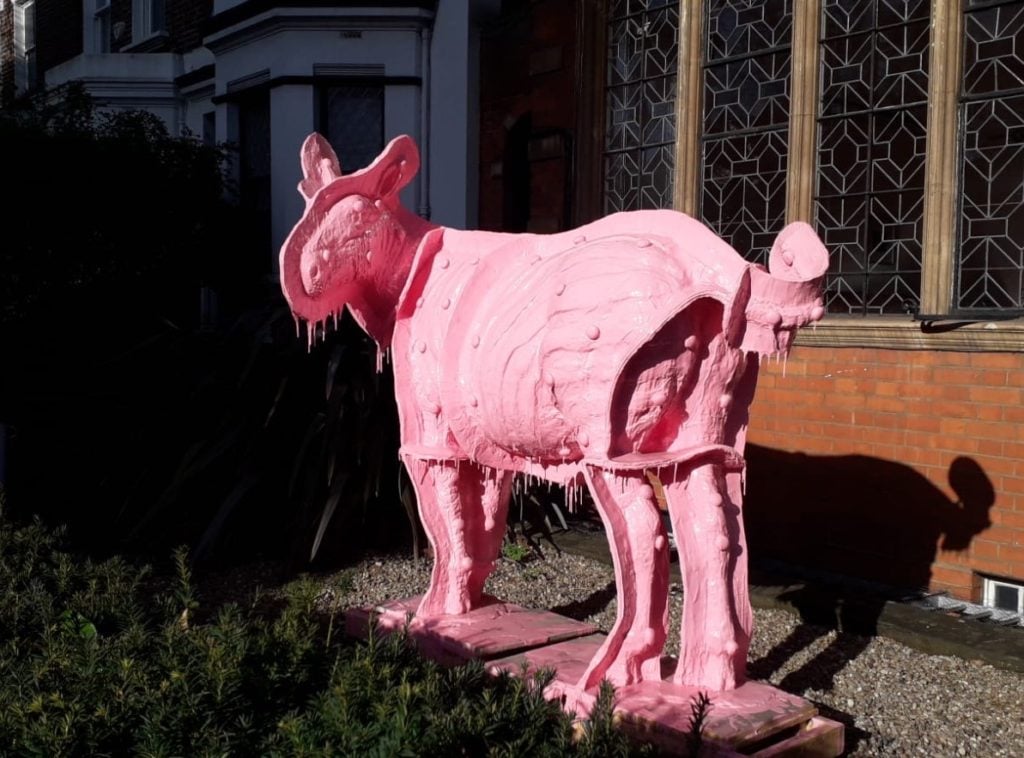Galleries
The Abrupt Closure of the High-Profile Blain Southern Gallery Leaves Artworks in Limbo—and Artists Out of Pocket
Artworks on consignment from artists are being held in storage in London, Berlin, and New York.

Artworks on consignment from artists are being held in storage in London, Berlin, and New York.

Kate Brown

For the artist Nasan Tur, the choice was obvious. With two museum shows about to open, he could not afford to have his work stuck in storage in London and Berlin after Blain Southern, his former gallery, went into administration. Tur paid to get his works back rather than leave them in limbo until the financial mess is sorted out.
The Berlin-based artist’s predicament is shared by several artists who used to work with the gallery, which had spaces in London, Berlin, and New York until it abruptly closed all three on February 12, citing an inability to “secure the gallery’s future long term.” Fine arts storage companies are in a similarly tough spot as administrators begin to sort out who is owed what by the gallery.
Three former Blain Southern artists confirm that their works were held in storage as shipping and fine arts logistics companies work to recoup money owed to them by the gallery; those three managed to buy them out. Two shipping companies told Artnet News that there are more works still caught in limbo.
The situation faced by artists and suppliers is all part of the fallout from the gallery’s recent shuttering. Such a closure causes a ripple effect within a complex network of employees, fine-art-services companies, graphic designers and publishers, art handlers, and, of course, artists.
After expanding to New York and making a series of high-profile hires, the gallery that had been founded by Harry Blain and Graham Southern 10 years ago fell into financial trouble in the middle of last year.
London-based Martinspeed is one of the fine-art-storage and shipping companies that did business with Blain Southern. The company’s chairman, Simon Sheffield, confirms that by late summer it was becoming increasingly difficult to receive payments. The company grew concerned at the press coverage that came out in late fall as directors and high-profile artists began their respective walk–outs.
Southern and Blain officially parted ways in November. According to company filings, before Southern handed back his stake, the company was 90 percent owned by his former partner and co-founder Blain. Blain did not respond to a request for comment.
All parties owed money or assets are no longer dealing with the gallery but the London-based administrator ReSolve. Several artists and shipping companies contacted declined to comment on the situation, citing client-privacy concerns and ongoing legal proceedings.
According to one email seen by Artnet News, artists were asked to sign non-disclosure agreements in late January, a not-particularly-unusual practice. One artist said that it was implied that signing it would lead to getting paid.

Chiharu Shiota, Uncertain Journey (2016). Installation view: Uncertain Journey, Blain | Southern, Berlin, 2016. Photo by Christian Glaeser.
With around 40 artists on its roster until late last year, there are likely troves of high-value works of art held up in storage facilities in London, New York, and Berlin. The gallery represented Chiharu Shiota, Bill Viola, Lynn Chadwick’s estate, Wim Wenders, Michael Joo, and Bosco Sodi, among others, though it is not clear if their works are still in storage. Several artists, including Matt Collishaw, Jake & Dinos Chapman, and Sean Scully, had left in the lead-up to the gallery’s ultimate closure.
Sheffield says Martinspeed is working with the administrator to resolve matters “in what are very difficult circumstances.” He confirms the company has been put in the awkward position of having to hold onto artworks for the time being. He would not confirm how many artists or works are affected. “We’re trying to come up with solutions so that artists can get their works back,” he stresses. He reveals that some of Blain Southern’s former artists have opted to leave their works with the company by opening personal accounts.
In New York, Fritz Ewins, who runs a family-owned art-shipping company, sounds noticeably pained as he discusses the extremely tough decision he had to make to hold onto artworks while seeking payment. “It’s a frustrating situation for everyone involved,” Ewins admits. “We are not looking to take advantage of anyone, and we hope this situation is resolved in the near future.”

Michael Joo, Doppelganger (Pink Rocinante) (2009) at the Royal Society of Sculptors. Copyright the artist. Photo by Caroline. Worthington.
When the a quiet alarm began sounding about Blain Southern’s finances earlier this year, artists had to act quickly to recover their works. According to one artist formerly represented by the gallery who asked not to be named as legal proceedings are underway, a former Blain Southern director called a week before the gallery announced it was closing to alert artists they should collect their works immediately. Nasan Tur says he was notified. Staffers tried to help “as far as it was possible for them under this situation,” Tur says.
Others are less understanding. “Everything was wrong in this, but we knew we had to just get it done because we needed to remove the work quickly,” says another artist formerly represented by the gallery. “All these works are my property and it would be terrible timing had we waited longer.” They bought out some of their artworks from a London fine-art-storage facility, but others are still in limbo.
It remains to be seen how the administrator will resolve the situation and who could be left out of pocket. “The non-preferential creditors are going to bear the brunt of this,” Sheffield says. “I would be surprised if there are not some losses incurred.” In cases of insolvency, secured creditors like banks and major lenders are typically paid first. Prioritized creditors like employees tend to be second in line; non-preferential creditors would include everyone else with whom the company has done business. ReSolve, the company handling the administration, did not respond to a request for comment.
Beyond artists’ works consigned to the gallery, there are also works on loan to third parties caught up in the fallout. The Royal Society of Sculptors in London has a Michael Joo pink zebra on display on its sculpture terrace. On loan from the artist via Blain Southern since December, the artist-led society is now unclear where Doppelganger (Pink Rocinante) (2009) should return later this month.
“We understand it should still go back to the gallery,” says the society’s director, Caroline Worthington, but they are checking with Joo’s studio in New York as circumstances have changed since agreeing to the loan. She calls the closing of the gallery very sad, particularly for the gallery’s staff. “I suspect there are other institutions that have borrowed their artists’ work in the same situation,” she adds.